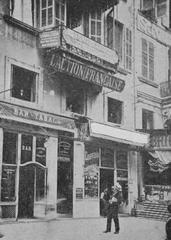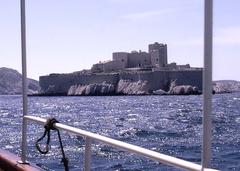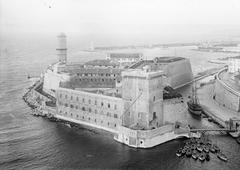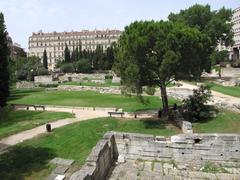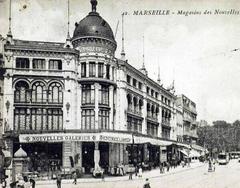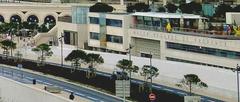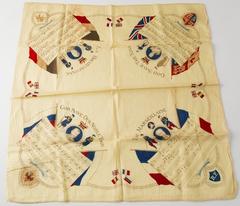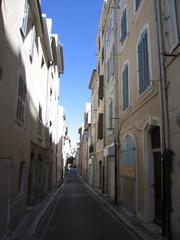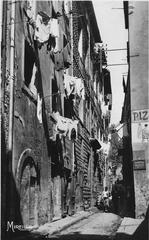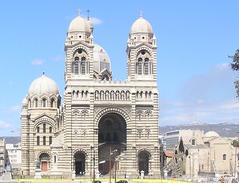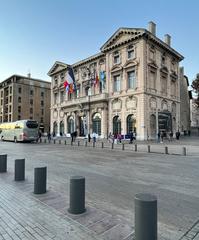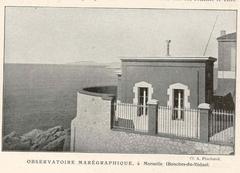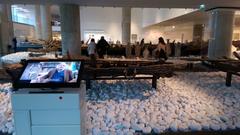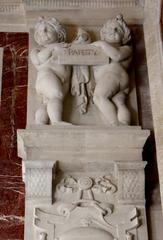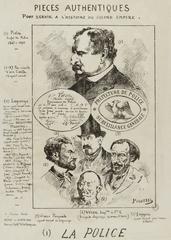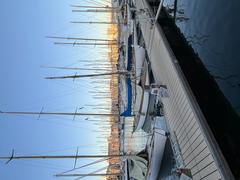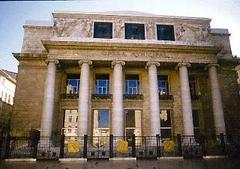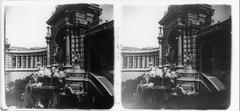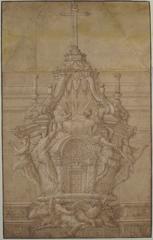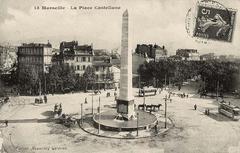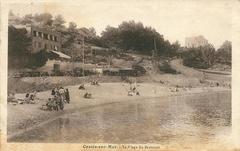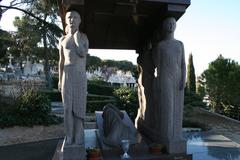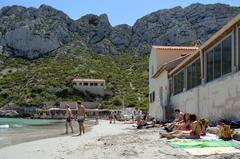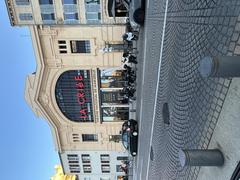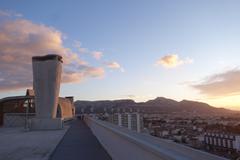Préfecture Marseille Visiting Hours, Tickets, and Historical Sites Guide
Date: 04/07/2025
Introduction: The Heart of Marseille’s Civic and Cultural Life
Nestled in Marseille’s 6th arrondissement, the Préfecture district is a vibrant showcase of the city’s historical depth, neoclassical architecture, and dynamic urban life. Dominated by the imposing Préfecture des Bouches-du-Rhône, a 19th-century neoclassical masterpiece, the area reflects Marseille’s evolution from fortified port to cosmopolitan metropolis. Although the Préfecture serves as an administrative center and is not routinely open to the public, its grand façade and lively surroundings invite exploration. From leisurely walks to guided tours and visits to nearby cultural landmarks—including the Musée Cantini and the Vieux-Port—the district is an essential stop for any visitor.
The district’s origins trace back to the late 17th century, when King Louis XIV’s fortifications reshaped its urban fabric. Later, the 19th-century boom, driven by maritime trade and colonial expansion, transformed the district with elegant boulevards, Second Empire residences, and bustling commercial streets. Today, the Préfecture district is easily accessible, with excellent public transport connections and pedestrian-friendly avenues.
For a detailed look at Marseille’s Préfecture district, including historical insights and visitor information, see sources such as Marseille City of Culture, Marseille Tourism, and Urban Transport Magazine.
Guide Contents
- Introduction
- Historical Evolution of the Préfecture District
- Architectural and Urban Significance
- Cultural Life and Nearby Attractions
- Practical Visitor Information
- Visiting Hours and Tickets
- Guided Tours
- Accessibility and Transport
- Urban Life: Shopping, Dining, and Social Scene
- Essential Visitor Tips
- FAQs
- Special Events and Seasonal Highlights
- Planning Your Visit
- Conclusion
Historical Evolution of the Préfecture District
From Royal Fortifications to Urban Expansion
The roots of the Préfecture district go back to Marseille’s expansion in the 17th century. After its annexation to the Kingdom of France in 1481, Marseille kept a strong independent spirit, leading to tensions with the monarchy. In response to local uprisings, Louis XIV had the city’s fortifications reinforced and commissioned Fort Saint-Nicolas in 1660, which influenced the district’s early urban structure (Britannica).
Major growth occurred in the 19th century as Marseille became a “port of empire.” The conquest of Algeria, the suppression of piracy, and the opening of the Suez Canal in 1869 made Marseille a pivotal trade hub. This economic boom drove the construction of new administrative centers, most notably the Palais de la Préfecture, designed by Charles Questel and completed in 1866 (Marseille City of Culture).
Surrounding the Préfecture, wide boulevards like Rue de Rome and Rue Saint-Ferréol were developed, lined with Haussmannian and neoclassical buildings. Place Castellane emerged as a civic focal point (Urban Transport Magazine).
20th-Century Changes and Modern Connectivity
World War II brought significant destruction to Marseille. While the Préfecture itself remained largely intact, surrounding neighborhoods underwent modernist renewal, notably guided by architect Fernand Pouillon (Made in Marseille). Today, the district benefits from sustainable urban initiatives, expanded public transportation (tram lines T1, T2, T3 and metro Lines 1 and 2), and improved pedestrian access.
Architectural and Urban Significance
The Préfecture des Bouches-du-Rhône is a prime example of 19th-century civic architecture. Its grand symmetrical façade, monumental columns, ornate pediments, and sculptural details symbolize state authority and Marseille’s aspirations during the Second Empire (marseille-tourisme.com). The building is set back from the street, with Place Félix Baret providing an impressive approach.
Surrounding streets are lined with “immeubles bourgeois”—elegant 19th-century residences featuring intricate ironwork and pastel shutters. Public spaces such as Cours Pierre Puget and Place Castellane offer tree-lined promenades and are the settings for markets and festivals. The area’s urban plan blends neoclassical civic architecture with remnants of older city structures, reflecting Marseille’s layered history (EAA Architecture Guide).
Cultural Life and Nearby Attractions
The Préfecture district is both an administrative hub and a center of cultural vibrancy:
- Musée Cantini: Located in a 17th-century mansion, this museum is a major venue for modern and contemporary art, with works by Picasso, Giacometti, and Duchamp (marseille-tourisme.com).
- Quartier des Antiquaires: Rue Edmond Rostand is home to antique shops, rare book dealers, and vintage furniture stores.
- Shopping and Social Life: Rue Saint-Ferréol and Rue de Rome are lively shopping streets with boutiques, bookshops, cafés, and a cosmopolitan culinary scene.
- Nearby Landmarks: The district is within walking distance of the Opéra de Marseille, Vieux-Port, Canebière, Musée d’Histoire de Marseille, and Abbaye Saint-Victor.
Annual events such as the Fête de la Musique and Carnaval de Marseille bring additional vibrancy, while the area’s multicultural population is reflected in its diverse markets and eateries (timetomomo.com).
Practical Visitor Information
Visiting Hours and Tickets
- Préfecture des Bouches-du-Rhône: The building is generally not open for public tours. Its monumental exterior and Place Félix Baret are accessible year-round.
- Musée Cantini: Open Tuesday–Sunday, 10:00 AM to 6:00 PM. Closed Mondays and public holidays. General admission is around €5, with discounts for students and seniors; tickets can be purchased on-site or online.
Guided Tours
While the Préfecture itself is not open except during special events (such as European Heritage Days in September), guided walking tours of the district—including its history and architecture—are available via local operators and the Marseille Tourist Office.
Accessibility and Transport
The district is well-served by:
- Metro: Estrangin-Préfecture (Line M1); Vieux-Port and Castellane stations are also close by.
- Tram: Lines T1, T2, T3.
- Bus: Multiple lines, including 49 and 82.
- Bike Hire: Self-service electric bike stations are widely available (marseille-tourisme.com).
Public spaces and most museums are wheelchair accessible. Some historic interiors may have limitations—check in advance.
Amenities
The area is filled with cafés, bakeries, and shops. Public restrooms, ATMs, convenience stores, and the Marseille Tourist Information Center (11 La Canebière) are all nearby (Voyage Tips).
Urban Life: Shopping, Dining, and Social Scene
Préfecture’s atmosphere is distinctly cosmopolitan. Rue Saint-Ferréol is the main pedestrian shopping artery, while Rue de Rome boasts both fashion boutiques and local eateries. The culinary scene spans Provençal classics to international specialties, reflecting the city’s multicultural heritage (hostelgeeks.com). The district’s social scene is lively, with plenty of options for both quick snacks and leisurely meals.
Essential Visitor Tips
- Best Times to Visit: Spring and autumn offer mild weather and fewer crowds. Summer is festive but hot and busy (Lonely Planet).
- Safety: The area is generally safe. Be mindful of personal belongings in crowded places (destinationabroad.co.uk).
- Tickets: Buy museum tickets online or on-site to avoid queues.
- Transport: Consider the Marseille City Pass for unlimited public transport and discounted entry to attractions (thetouristchecklist.com).
- Eco-Friendly Travel: Use public transport or bikes for sustainable exploration (TravelSetu).
Frequently Asked Questions (FAQ)
Q: Can I visit inside the Préfecture?
A: Interior access is generally restricted, but guided tours are sometimes available during European Heritage Days in September.
Q: Do I need tickets to visit the district or Préfecture?
A: No tickets are required for admiring the exterior or public spaces. Guided tours during special events may require free or reserved tickets.
Q: What are the visiting hours for Musée Cantini?
A: Tuesday–Sunday, 10:00 AM to 6:00 PM; closed Mondays.
Q: How do I get there by public transport?
A: Metro Estrangin-Préfecture (Line M1) is the nearest stop. Trams and several bus lines also serve the area.
Q: Is the area accessible for visitors with reduced mobility?
A: Yes, most public spaces and museums are accessible, but check ahead for historic interiors.
Special Events and Seasonal Highlights
The Préfecture is a focal point for major city events, including Bastille Day (July 14), open-air concerts, and Christmas markets. European Heritage Days in September are the best opportunity for interior tours of the Préfecture (Marseille Tourism).
Planning Your Visit
For a seamless experience, plan to combine your Préfecture visit with nearby attractions such as La Canebière, Vieux-Port, Le Panier, and Cours Julien. Guided walking tours offer deeper insights into the district’s history and architecture. Use digital tools like the Audiala app for curated itineraries, audio guides, and real-time event updates.
Conclusion
The Préfecture district stands as a testament to Marseille’s resilience, growth, and cultural fusion. Its Second Empire architecture, lively boulevards, and proximity to both historical and contemporary attractions make it a must-visit for anyone interested in the city’s heritage. While interior access to the Préfecture is limited, the district’s public spaces, museums, and vibrant urban life offer rich experiences for all visitors.
For more information, see Marseille Tourism, The Tourist Checklist, and Made in Marseille.
References and Official Links
- Discovering the Préfecture District in Marseille: History, Visiting Hours, and Travel Tips (Marseille City of Culture)
- Visiting the Préfecture des Bouches-du-Rhône: Hours, Tickets, and Exploring Marseille’s Historical Sites (Marseille Tourism)
- Visiting the Préfecture District: Your Complete Guide to Marseille’s Historical Sites, Visiting Hours, and Urban Life (Marseille Tourism)
- Préfecture de Marseille Visiting Hours, Tickets & Tourist Guide to Marseille Historical Sites (The Tourist Checklist)
- Visiting the Préfecture District in Marseille: History, Tickets, and Travel Tips (Urban Transport Magazine)
- Visiting the Préfecture District: Your Complete Guide to Marseille’s Historical Sites, Visiting Hours, and Urban Life (TimetoMomo)
- Préfecture de Marseille Visiting Hours, Tickets & Tourist Guide to Marseille Historical Sites (Voyage Tips)
- Visiting the Préfecture des Bouches-du-Rhône: Hours, Tickets, and Exploring Marseille’s Historical Sites (Made in Marseille)
